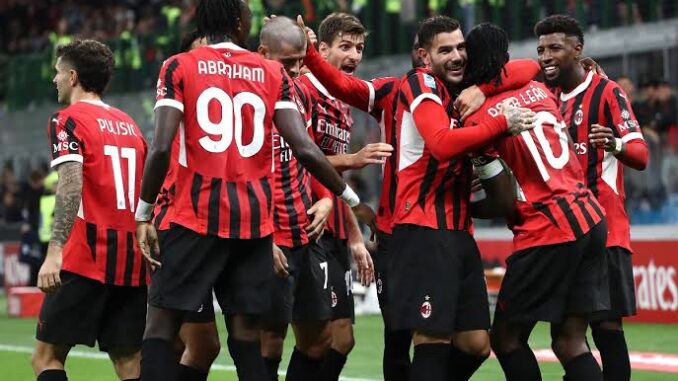
AC Milan, one of the most iconic football clubs in the world, is once again turning heads with their impressive performances on the pitch. After a period of transition and rebuilding, the club has adopted a new football strategy that is pushing them closer to the summit of both Serie A and European competitions. Under the guidance of coach Stefano Pioli and with a squad packed with young talent and experienced leaders, AC Milan’s tactical evolution is proving to be a masterstroke in their resurgence.
One of the key aspects of AC Milan’s new strategy is the shift from a rigid formation to a more dynamic, flexible style of play. Traditionally known for a solid 4-4-2 or 4-3-3 setup, Pioli has introduced a hybrid system that adjusts based on the flow of the game. Often deploying a 4-2-3-1 formation, Pioli’s Milan is fluid, with players constantly interchanging positions, creating a dynamic offensive approach that keeps opponents guessing.
The role of the full-backs has been crucial in this transformation. Players like Theo Hernández and Davide Calabria are given the freedom to push forward, creating width and stretching the opposition’s defense. This allows Milan to maintain a high press and quick transitions from defense to attack, a hallmark of Pioli’s strategy.
Another factor driving Milan’s resurgence is the club’s emphasis on youth development and versatility. The likes of Rafael Leão, Sandro Tonali (before his departure), and Pierre Kalulu have all flourished under Pioli’s system, with Leão in particular becoming a standout figure in European football. These young talents, combined with seasoned professionals like Olivier Giroud and Simon Kjær, form a balanced squad that blends youthful exuberance with veteran wisdom.
Versatility is also key to Milan’s new strategy. Players are encouraged to take on multiple roles across the pitch, making them unpredictable in both attack and defense. For example, Rade Krunić has been used as both a defensive midfielder and an advanced playmaker, while Alexis Saelemaekers often shifts from winger to wing-back, depending on the game’s requirements. This flexibility has made Milan a difficult team to prepare for, as they can adapt to various playing styles and counter
AC Milan’s renewed focus on high-pressing football has been another cornerstone of their strategy. Pioli’s men are relentless in hunting down the ball when out of possession, often forcing opponents into mistakes in their own half. This high-octane style of play demands top-level fitness and concentration, and the results are showing. Milan consistently wins the ball high up the pitch, leading to quick counter-attacks and dangerous goal-scoring opportunities.
This pressing strategy not only disrupts the rhythm of opponents but also allows Milan to maintain control of the game, dominating possession and dictating the pace. Teams that once found comfort in playing out from the back now face immense pressure when up against the Rossoneri.
A critical element of AC Milan’s strategy is their improved squad depth, which has allowed Pioli to rotate players more effectively. The club has strengthened key areas by bringing in players like Christian Pulisic, Tijjani Reijnders, and Ruben Loftus-Cheek, adding more options in midfield and attack. This depth ensures that key players remain fresh for crucial fixtures and that Milan has the ability to compete on multiple fronts without losing momentum.
AC Milan’s strategic overhaul is paying dividends, and their performances are sending a clear message: the Rossoneri are back. With a blend of tactical flexibility, youthful energy, and a relentless pressing game, they have the tools to challenge for domestic and European glory. As the season progresses, Milan fans have every reason to believe that their team is on the path to restoring its position among Europe’s elite.
Leave a Reply